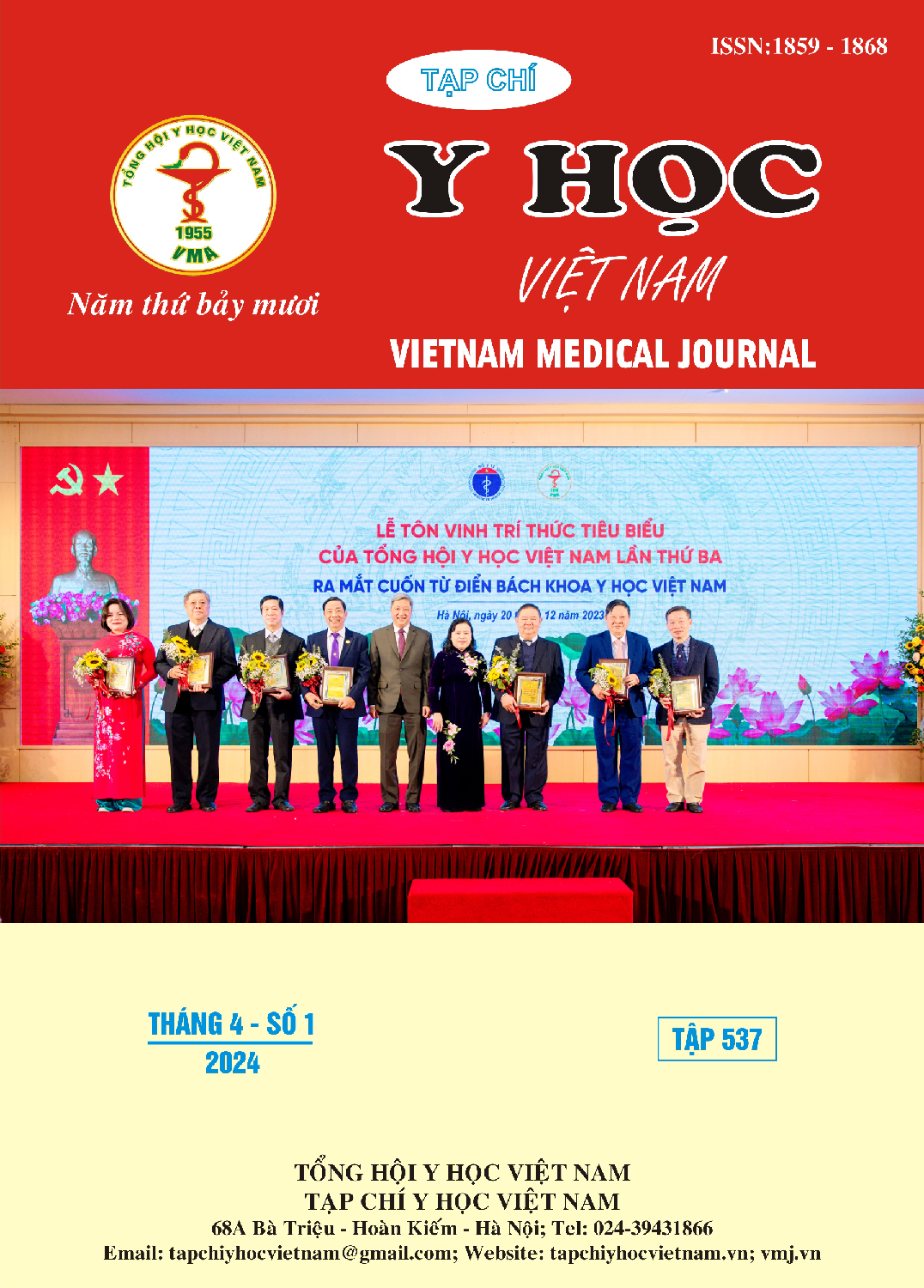THỰC TRẠNG SỬ DỤNG TEST SÀNG LỌC TRƯỚC SINH CỦA THAI PHỤ TẠI BỆNH VIỆN PHỤ SẢN HÀ NỘI VÀ MỘT SỐ YẾU TỐ LIÊN QUAN
Nội dung chính của bài viết
Tóm tắt
Mục tiêu: Mô tả thực trạng và phân tích một số yếu tố liên quan đến sử dụng các test sàng lọc trước sinh của thai phụ tại Bệnh viện Phụ sản Hà Nội. Đối tượng và phương pháp nghiên cứu. Nghiên cứu mô tả cắt ngang trên 350 thai phụ khám thai Bệnh viện Phụ sản Hà Nội từ tháng 01/2021 đến tháng 06/2022. Kết quả: Tỷ lệ thai phụ sử dụng siêu âm thai có tỷ lệ sử dụng cao nhất (62%); 59,1% thai phụ xét nghiệm Double test. Tuy nhiên chỉ có 20,6% và 28,6% thai phụ đã thực hiện Triple test và NIPT. Kết quả phân tích hồi quy cho thấy các thai phụ có độ tuổi > 30 tuổi; có trình độ học vấn Đại học/Sau đại học; mang thai ≥ 2; thai có nguy cơ từ kết quả khám thai các lần trước và được tư vấn xét nghiệm sàng lọc trước sinh có tỷ lệ thực hành sử dụng test sàng lọc cao hơn nhóm thai phụ còn lại. Kết luận: Tỷ lệ sử dụng các test sàng lọc trước sinh của thai phụ là từ 20,6% đến 62%. Sự khác biệt có ý nghĩa thống kê về sử dụng các test sàng lọc giữa nhóm tuổi, trình độ học vấn, số lần mang thai, kết quả khám thai, tư vấn xét nghiệm
Chi tiết bài viết
Từ khóa
test sàng lọc trước sinh, thai phụ
Tài liệu tham khảo
2. Đinh Thuý Linh (2017), Khảo sát nhu cầu tiếp cận các dịch vụ sàng lọc douple test, triple test và chẩn đoán trước sinh của phụ nữ khám thai tại Bệnh viện Phụ sản Hà Nội năm 2015 - 2016, Đề tài cơ sở, Bệnh viện Phụ sản Hà Nội.
3. Breathnach FM, Malone FD, Lambert-Messerlian G, et al (2007). "First and second trimester screening: detection of aneuploidies other than Down syndrome". Obstet Gynecol Ireland, 110(3):pp.651-658.
4. Vaknin Z1, Reish O, Ben-Ami I et al (2008). "Prenatal diagnosis of sex chromosome abnormalities: The 8 year experience of a single medical center". Fetal Diagnosis Therapy, 23:pp 76 – 81.
5. Yaron Y1, Lehavi O, Orr-Urtreger A et al (2002). "Maternal serum hCG is higher in the presence of female fetus as early as week 3 post - fertilization". Human reproduction,17(2):pp.485– 489.
6. Elisa García, Danielle R. M. Timmermans and Evert van Leeuwen (2012), "Parental duties and prenatal screening: does an offer of prenatal screening lead women to believe that they are morally compelled to test?", Midwifery. 28(6), e837-843.
7. Vasilis Sitras et al. (2020), "[Pregnant women's attitudes to prenatal screening in Norway]", Tidsskrift for den Norske laegeforening : tidsskrift for praktisk medicin, ny raekke. 140(14).
8. S. Tschudin et al. (2009), "Pregnant women's assessment and level of knowledge of prenatal counseling", Ultraschall in der Medizin (Stuttgart, Germany: 1980). 30(2), 157-162.
9. David Chitayat, Sylvie Langlois and R. Douglas Wilson (2011), "Prenatal screening for fetal aneuploidy in singleton pregnancies", Journal of obstetrics and gynaecology Canada: JOGC Journal d'obstetrique et gynecologie du Canada: JOGC. 33(7), 736-750.


